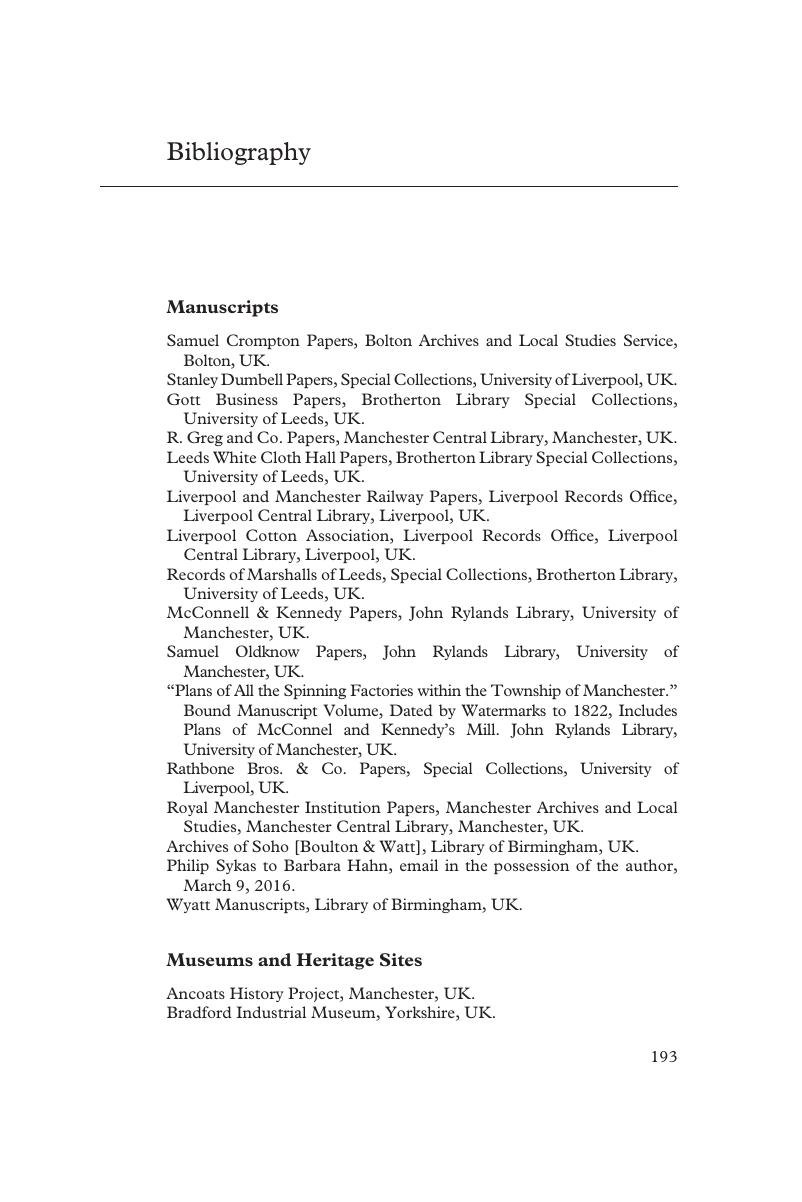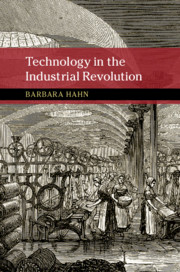Book contents
- Technology in the Industrial Revolution
- New Approaches to the History of Science and Medicine
- Technology in the Industrial Revolution
- Copyright page
- Dedication
- Contents
- Figures
- Acknowledgments
- Introduction
- 1 Sugar and Spice
- 2 Myths and Machines
- 3 Cottonopolis
- 4 Power and the People
- 5 The Vertical Mill
- Conclusion
- Appendix: Alternative Examples
- Bibliography
- Index
- References
Bibliography
Published online by Cambridge University Press: 09 January 2020
- Technology in the Industrial Revolution
- New Approaches to the History of Science and Medicine
- Technology in the Industrial Revolution
- Copyright page
- Dedication
- Contents
- Figures
- Acknowledgments
- Introduction
- 1 Sugar and Spice
- 2 Myths and Machines
- 3 Cottonopolis
- 4 Power and the People
- 5 The Vertical Mill
- Conclusion
- Appendix: Alternative Examples
- Bibliography
- Index
- References
Summary

- Type
- Chapter
- Information
- Technology in the Industrial Revolution , pp. 193 - 216Publisher: Cambridge University PressPrint publication year: 2020



